In the remote hills of the Chin State, tribes of tattooed women inhabit the villages, and as the area becomes more and more connected to the rest of Myanmar, local traditions are dying out.
Kanpelet, Mandat deep in the remote hills of the Chin State, tribes of tattooed women inhabit villages. It is about 7 hours drive from Bagan.
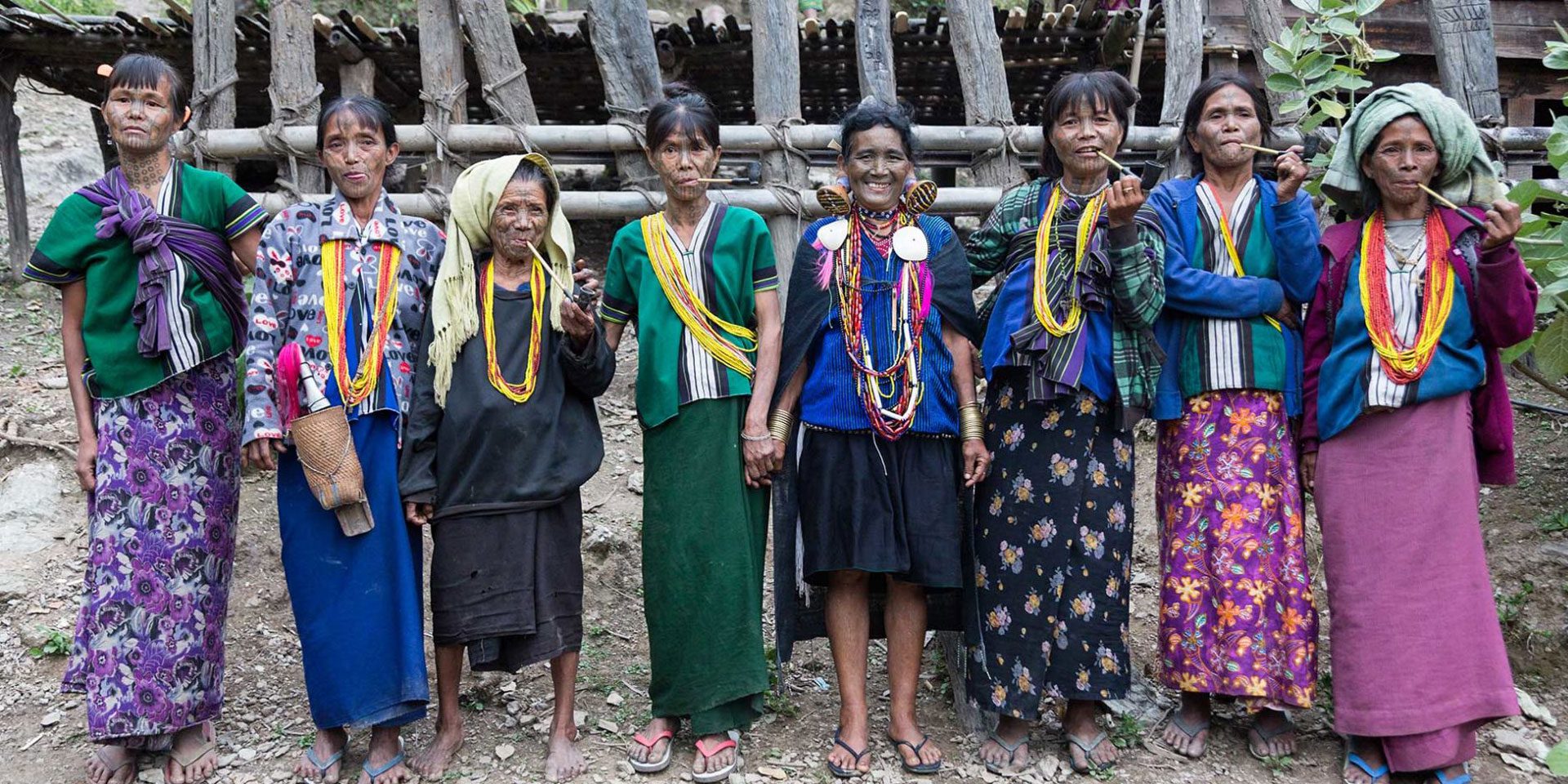
Chin Tour Tattoo Women

“There are those who travel but never really arrive. Those who visit a place but never know the people. Travel is so much more when you get closer to life and how it is lived.” With Myanmar Shalom Travels you will be able to experience an authentic experience of Myanmar.
Of Myanmar’s over 130 ethnic groups, more than 50 are Chin, and in the past the women of each tribe would wear distinct tattoo designs, including: pa mae, which covers the whole face including the ears and eyelids; pa pyouk, which drops black spots across the whole face; pa khyaung, which puts eight lines across each cheek; pa kyar, which draws four lines and four drops; and pa wine, which mixes circles and lines.
“I didn’t think of anything except having those tattoos on my face,” remembers Daw Khui Shing, a member of an ethnic group calling themselves Mun, “because all of my friends and relatives were having them too in that time.” But “that time” is decades ago now, and today tattoo-wearers are an ageing breed.
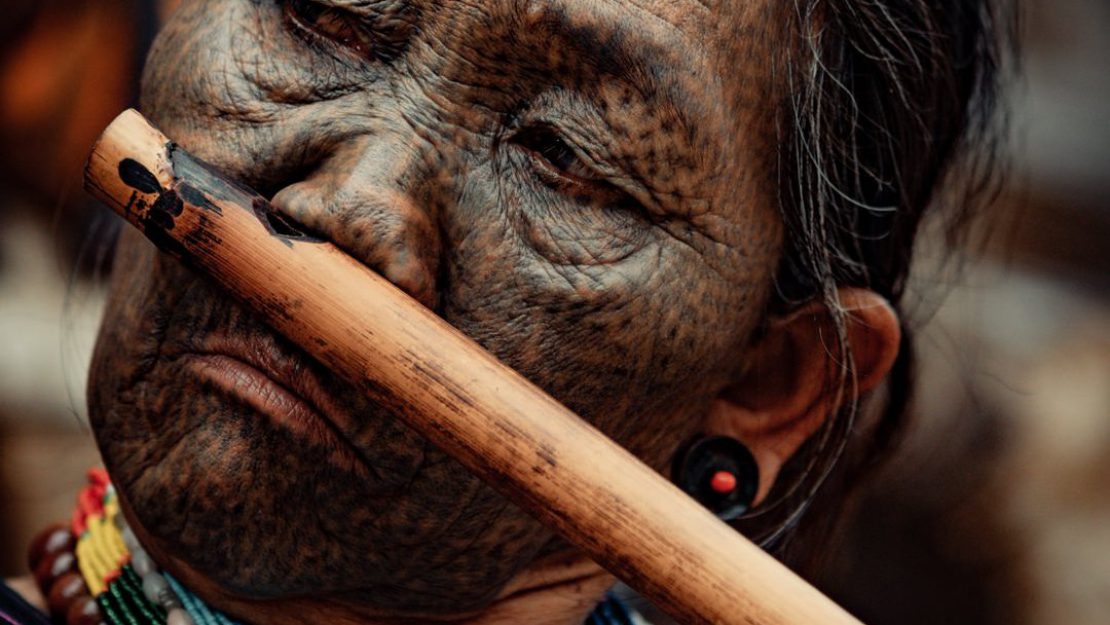
ABOVE: Kenpelet
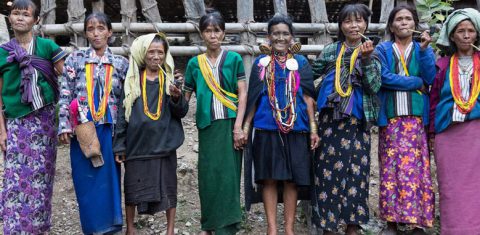
Still, even as they see it vanishing before their eyes, many continue to believe in the importance of the tradition. Daw Khui Shing Awi was encouraged to get tattooed by her parents. She says the tattoos make Chin people look “more beautiful” when paired with traditional costumes, large earrings and necklaces.
Facial tattoos are made from heating the bark of green pine trees and capturing the smoke in a mud pot. The smoke is then mixed with a kind of bean leafs and the resulting liquid is injected under the skin, using the thorn of a cane plant.
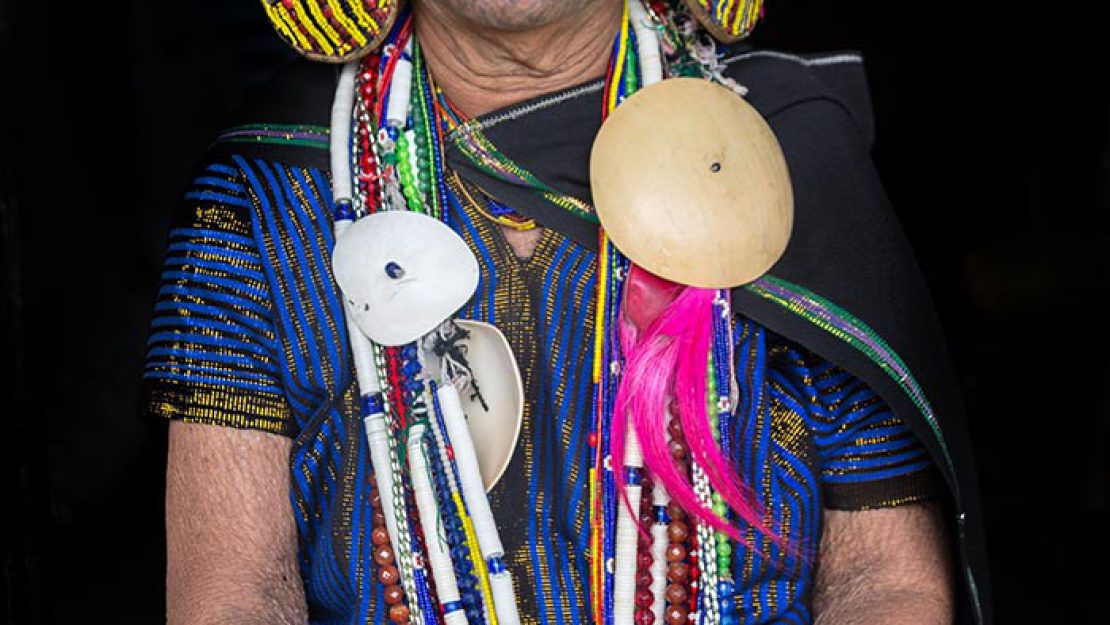
ABOVE: Mindat
“Afterward we had to wash our faces for two days,” remembers Daw Khui Shing Awi. “Though it was painful, there was no blood. If there was no marking visible after washing, we needed to make it again because the liquid of the tattoo was not good.”
There are many stories about the origins of Chin tattoos, but the most influential is that a Burmese king married a beautiful Chin lady and brought her back from Chin State to his palace. When his new bride, unhappy in her new surroundings, snuck away to return home, she disguised herself for her journey by using a knife by make incisions in her face. Later, the Chin adopted facial markings as part of their culture.
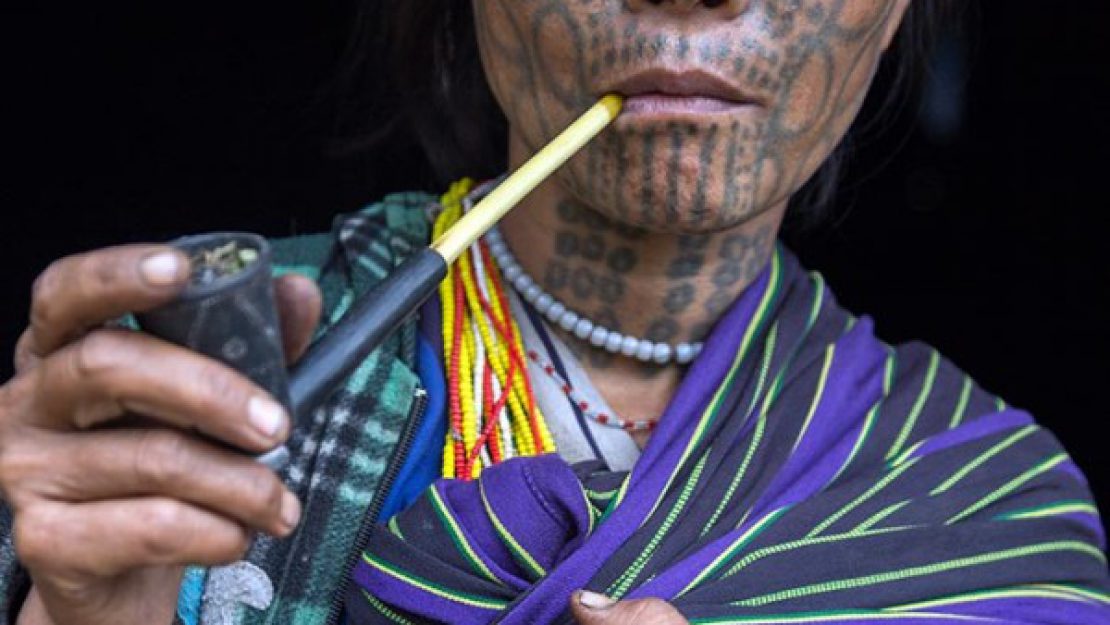
ABOVE: Muun
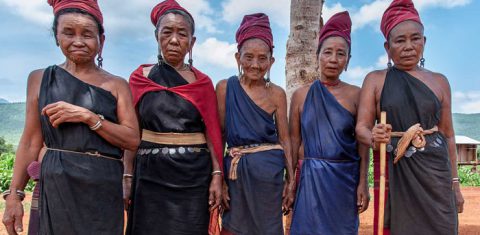
The Chin people are known for their animist ways of life. Though the communities still incorporate animist traditions, most have converted to Christianity and Buddhism in recent times
But the most peculiar aspect of The Chin is that no women under forty possess the facial tattoos they’ve become known for. In fact, most are over 70 years old. The government had banned the practice in the 1970s and now it isn’t performed.
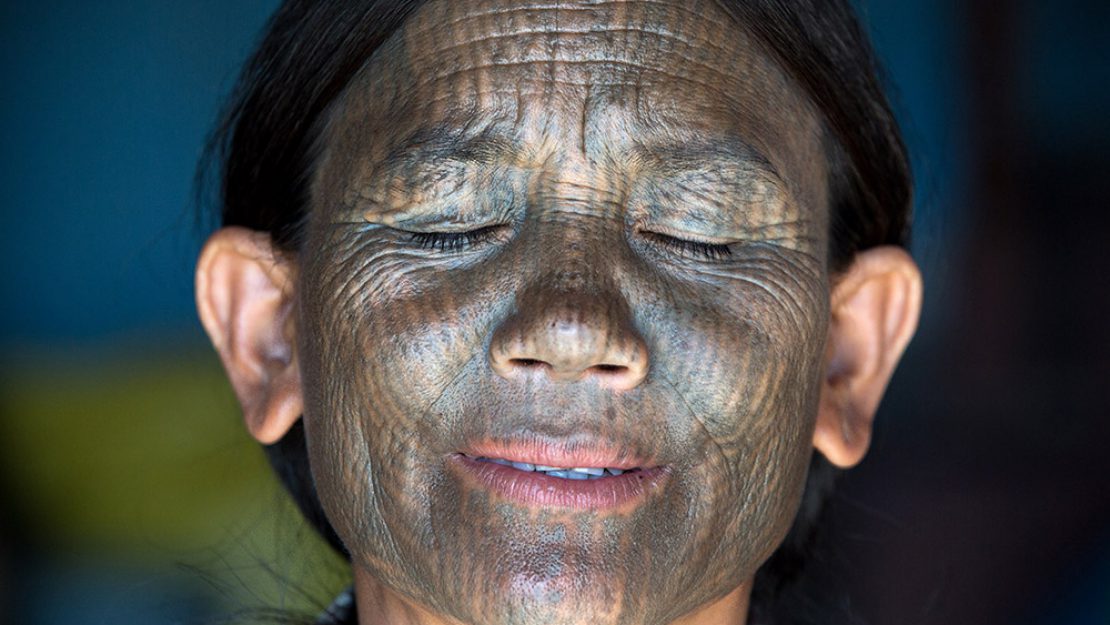
ABOVE: Tattoo Women Chin
Yaw Shen told that she started playing nose flute when she was 15 years old, adding, “I only play the flute when I remember someone that has passed away, such as my husband. It makes me sad when tourists come and I play for them, but I’m also proud at the same time to show them my tradition.” She went on to tell us she has tried to teach the younger generation how to play nose flute, but they couldn’t do it. Another poignant reminder that in time this tradition too will die out.
Visiting this far-flung corner of Myanmar is like traveling back in time, but it’s very apparent that society is changing rapidly. As Chin State is becoming more connected to the rest of Myanmar, local tradition is dying.